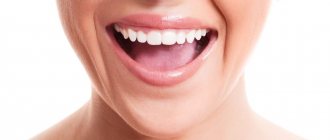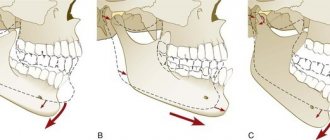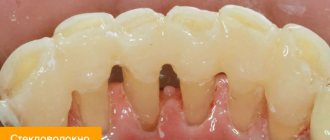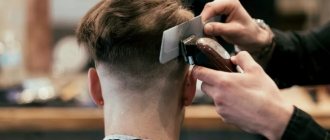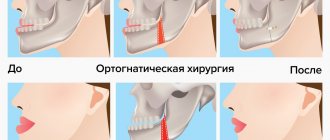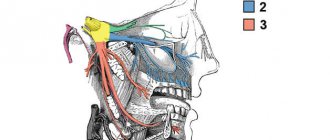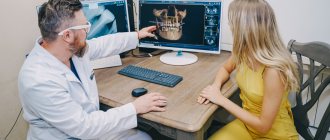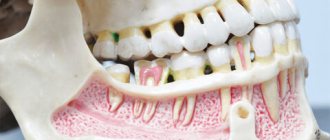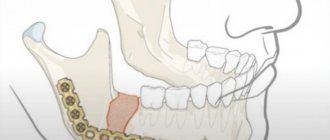Osteosynthesis of the lower jaw is a method of surgical treatment of fractures in this area. It is used in cases where the so-called conservative fixation of fragments is not possible. In our medical center, indications for osteosynthesis include the following types of fractures:
- fracture of the jawbone within the dentition, with some teeth missing on both jaws;
- with a large displacement of jaw fragments anywhere (in the area of the teeth or outside the dentition);
- comminuted fractures;
- pathological fractures resulting from the growth of neoplasms or chronic osteomyelitis;
- congenital and acquired pathologies that require correction.
This is not a complete list of cases in which surgical intervention is necessary. If you need the help of a highly qualified specialist in the field of maxillofacial surgery, contact our “International Multidisciplinary Center”. Our doctors will perform osteosynthesis of the lower jaw efficiently, quickly and painlessly. We also draw your attention to the fact that the doctors of our center carry out correction of the lower jaw in any situations (fresh and old fractures, improper bone fusion, the presence of other jaw defects).
Osteosynthesis of the lower jaw - features of its implementation
Our experienced surgeons select the optimal type of osteosynthesis (open or closed, focal or extrafocal) in each specific case.
This operation is carried out using anesthesia, which is also selected individually. So, after communication between a qualified anesthesiologist at our center and the patient, the specialist decides whether conduction or infiltration anesthesia will be used, or perhaps general anesthesia is necessary.
Make an appointment
Calling a doctor to your home
15% discount coupon
Introduction
Injuries to the maxillofacial region continue to remain one of the pressing surgical problems, which is associated with an increase in the number of patients with fractures of the facial skull bones as a result of road accidents and domestic conflicts, the aggravation of this type of pathology, and the increase in multiple and combined injuries [1, 2]. According to specialized literature, the share of maxillofacial trauma in the structure of various injuries among the urban population is 3.2–8.0% [3]. Fractures of the lower jaw account for up to 85% of the total number of fractures of the facial skull [4–7]. The development and implementation of new methods for fixing bone fragments have significantly increased the effectiveness of surgical treatment in the category of patients under discussion; however, according to a number of authors, complications range from 5.2 to 38.4% of cases [8–11].
Many of the proposed methods are successfully used in everyday practice for performing osteosynthesis for facial skull fractures - titanium plates on the bone, bone suture with stainless steel or tantalum wire, Kirschner wires, a possible combination of bone suture and wires, fixing structures made of shape memory materials. The purpose of this article is to describe the clinical use of titanium nickelide (nitinol) shape memory brackets for mandibular angular fractures.
Clinical case
Patient T.
, 41 years old, was admitted to the clinic of maxillofacial surgery of the University Clinical Hospital (UCH) No. 2 of the First Moscow State Medical University named after. THEM. Sechenov with complaints of pain in the lower jaw on the right, aggravated by chewing and opening the mouth, swelling of the face on the right, and malocclusion.
From the anamnesis it was established that the injury was received as a result of a fight with an unknown person 8 hours before going to the hospital. The patient did not report any compression phenomena. He went to the trauma center, where an X-ray of the skull and intermaxillary fixation were performed using Tigerstedt dental splints. The patient was taken by an ambulance team to the clinic of Clinical Hospital No. 2 of the First Moscow State Medical University named after. THEM. Sechenov, was hospitalized on an emergency basis.
On admission: general condition is relatively satisfactory. Somatic status without features. Upon examination, pronounced swelling of the soft tissues in the parotid-masticatory, buccal and submandibular areas on the right was determined. It was difficult to gather the skin into a fold; local pain was noted on palpation. Regional lymph nodes are not enlarged. The symptom of direct and indirect load is positive in the area of the angle of the lower jaw on the right. Vincent's sign was positive on the right side. From the side of the oral cavity: opening is limited to 2 cm, there was a violation of the closure of teeth such as an open bite on the right. Ruptures in the mucous membrane of the alveolar part of the lower jaw in the area of 4.7–4.8 teeth, as well as the presence of hemorrhagic clots in the oral cavity, were visualized. Swallowing is free, moderately painful (Fig. 1, 2,
Rice. 1. Patient T.’s appearance during hospitalization.
Rice. 2. Orthopantomogram of patient T. during hospitalization. There is a violation of the integrity of the bone tissue in the area of the angle of the lower jaw on the right with the presence of tooth 4.8 in the fracture line. 3).
Rice. 3. X-ray of the skull of patient T. in a direct projection.
Based on complaints, anamnesis, clinical examination and x-ray examination, the diagnosis was made: “Fracture of the lower jaw in the area of the angle on the right with displacement of fragments.”
After additional examination and preoperative preparation, on the day of admission to the hospital, the patient underwent surgical intervention: osteosynthesis of the lower jaw in the area of the right angle using external access using titanium nickelide brackets.
The operation was performed as follows: with premedication under local anesthesia with Sol. Lidocaini 1% 20 ml, on the side of the fracture parallel to the edge of the lower jaw, retreating 2 cm in the area of the angle, a skin incision 4 cm long was made. The skin, subcutaneous fat, superficial fascia of the neck and m. Platisma. The masticatory muscle itself was cut off at the point of attachment to the angle of the lower jaw. The lower jaw in the area of the angle is skeletonized. After visualization of the fracture line, small bone fragments were removed, soft tissue interposition was eliminated, and blood clots were removed. Before performing osteosynthesis of the lower jaw, a loose bone fragment and tooth 4.8 were removed from the fracture line (Fig. 4),
Rice. 4. A removed bone fragment not connected to the periosteum, and tooth 4.8 from the fracture line. Reposition of bone fragments was performed. The bite was fixed in the patient’s usual position using rubber rods and osteosynthesis was performed using two Ω- and S-shaped titanium nickelide brackets under bite control (Fig. 5).
Rice. 5. Operation stage. Osteosynthesis of the lower jaw using Ω- and S-shaped titanium nickelide brackets.
The brackets were installed as follows: holes were formed bicortically on each fragment using a drill, then the legs of the bracket, pre-cooled to +1-3 °C, were bent to the sides (the bracket was activated) and inserted into the corresponding milling holes. When the bracket was heated to 35-36 °C, the original shape was restored - the legs of the bracket were brought closer together, which led to dosed compression of the bone fragments. The postoperative wound was treated with antiseptic solutions, and a latex graduate was installed. The wound was sutured in layers. Hemostasis was performed during the operation.
The postoperative period was uneventful. The patient was discharged for outpatient observation on the 7th day after surgery, after removal of the sutures. Mouth opening at the time of discharge was 3.0 cm.
On the 2nd day after surgery, control radiographs of the skull in a direct projection and orthopantomography were performed. The position of the bone fragments and fixation structures was correct, no secondary displacements were detected (Fig. 6,
Rice. 6. Orthopantomogram of patient T. after surgical treatment. 7).
Rice. 7. X-ray of the skull of patient T. in a direct projection after surgical treatment.
During a follow-up examination after 1 month, an increase in mouth opening to 4.2 cm was noted; the patient’s chewing function and appearance were completely restored (Fig. 8).
Rice. 8. a — appearance of patient T. 1 month after surgery; b — amplitude of mouth opening of patient T. 1 month after surgery. As a result of dynamic observation and interdisciplinary treatment together with a physiotherapist, the prescription of physiotherapy and vitamin therapy on the affected side, the sensitivity of the skin and teeth in the zone of innervation of the inferior alveolar nerve was restored after 6 months.
Over a three-year observation period with examinations once every 6 months, a stable state of occlusion, absence of pain in the lower jaw and neuropathy of the inferior alveolar nerve were noted.
Plates or braces – what to choose for your child?
There shouldn't be such a choice at all. These types of orthodontic appliances have different functions and capabilities. If the plates affect all teeth in a row, then braces successfully solve isolated problems, remove severe curvatures of individual units, crowding, and severe malocclusions. Also, the plate cannot be used if traumatic periodontitis is diagnosed. It should be noted that today orthodontists successfully combine these methods of treating dental anomalies. So, first they can prescribe the child to wear a braces system, and when the defect becomes less noticeable - plates.
Plates in pediatric dentistry
Installation of the device usually takes several weeks, since it is made from personal impressions, and this takes time. To create a suitable structure for the client, an x-ray diagnosis is first carried out. If there are any diseases of the oral cavity, they are subject to mandatory preliminary treatment. The dentist then takes impressions and sends them to the dental laboratory. Based on prepared plaster models, a structure of the correct shape is produced. It exactly matches the surface relief of the gums and palate, so the doctor does not have to spend a lot of time on adjustment.
How they work
Removable products are equipped with one or more screw mechanisms that can expand interdental spaces. They also often contain elements that help improve the situation of specific units. As necessary, the orthodontist tightens the screw, due to which the pressure created increases - the teeth begin to move in the desired direction. Getting used to wearing the device usually takes about two weeks.
Wearing rules
Children have to wear the device almost around the clock - about 22-23 hours a day. In this case, therapy can take about one to two years. Structures are replaced every six months. Children usually do not like having a foreign object in their mouth. They want to extract it. It is important to explain to parents that therapy is mandatory, and they need to try to get used to it. The device is removed before each meal. It needs to be cleaned with a special composition and a brush every evening. It is recommended to store the product in a special container.
Tightening the system
The screws of the device are tightened to change the pressure on the jaw. For this purpose, a special dental key is used. It is inserted into the main hole of the screw, and then turned along the guide arrow. After such an intervention, the child may feel severe discomfort for some time. But the procedure cannot be avoided; without it, it will not be possible to move the curved units. If necessary, the orthodontist can release the archwire. To do this, he makes one turn of the screw in the opposite direction.
Pros and cons of using plate systems in childhood
Among the advantages of using the described systems are the following:
- reasonable cost;
- high efficiency;
- no age restrictions;
- comfort while wearing;
- the ability to shoot from time to time;
- short production times.
If we talk about the disadvantages, they include:
- long treatment period (about one to two years);
- risk of allergies to medical materials;
- Not all dental defects can be eliminated (in the most severe cases, only braces help).
Why wear orthodontic plates to correct your bite?
Using dental devices, you can achieve the following results:
- make the row even, harmonious, improve the appearance of the smile;
- eliminate pain that occurs when chewing solid food due to improper positioning of the jaws;
- change the tilt or rotation of specific units;
- improve diction, remove lisp, burr;
- reduce interdental gaps.
Most often, bite correction with plates is prescribed to children of preschool and adolescence, that is, patients of those age groups whose jaws are not yet fully formed and therefore respond well to external influences. But this does not mean that adults cannot resort to the help of records. If the defect is minor, it is quite possible to eliminate it without braces, even in adulthood.
Professional dental care
In an international multidisciplinary clinic, experienced specialists will help restore the sockets of an extracted tooth, which in the future will allow you to continue orthopedic treatment or place implants much earlier than would have happened during natural healing.
In our work, we use the latest technologies and materials, based on the achievements of world dentistry. For us, not only the aesthetic aspect is really important, but also your health and the beauty of your smile. If you want to get implants, but are faced with relevant problems, we will help you find the optimal solution.

